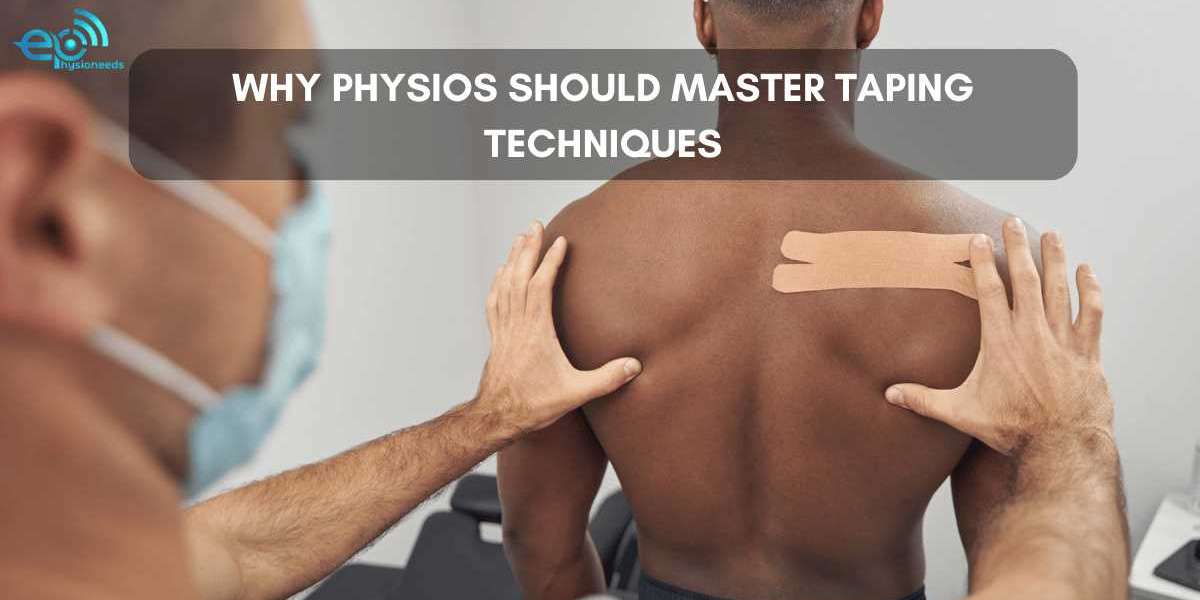Taping techniques have become a crucial part of modern physiotherapy, and for good reason. Whether it's supporting injured muscles, improving posture, or reducing pain, taping is more than just a temporary fix—it's a powerful therapeutic tool that can elevate your clinical outcomes and patient satisfaction.
What Is Taping in Physiotherapy?
Taping involves applying adhesive strips to the skin in specific patterns to support joints, muscles, and fascia. Techniques like kinesiology taping, rigid taping, and neuro-taping are commonly used across different rehab settings. When applied correctly, these methods help in:
- Reducing inflammation and pain
- Enhancing proprioception and muscle activation
- Improving posture and biomechanics
- Preventing re-injury during rehab or sports
Why Physios Should Learn Taping Techniques
1. Boost Clinical Outcomes
Mastering taping techniques allows physiotherapists to address a wide range of issues—from acute injuries to chronic conditions—more effectively. It's a non-invasive, supportive method that complements manual therapy, exercise, and electrotherapy.
2. Enhance Patient Trust and Satisfaction
When patients see visible improvements in pain and movement immediately after taping, their confidence in your care grows. It’s an easy way to show results and build rapport.
3. Support Active Populations
Athletes, dancers, and fitness enthusiasts often rely on taping to stay active while recovering. Learning how to apply functional taping can help you serve this population better and even open opportunities in sports rehab.
4. A Valuable Skill for Every Setting
From outpatient clinics to home-based therapy, taping is portable, affordable, and quick to apply. It's a valuable tool whether you work with neuro, ortho, or pediatric clients.
5. Future-Proof Your Physio Career
Advanced certifications in taping, like the Tapedia: Encyclopedia of Taping offered by E-Physioneeds, help you stand out in a competitive field. You’ll not only gain deep knowledge but also earn credentials that reflect modern, evidence-based practice.
What Is Tapedia?
Tapedia is a specialized course designed to make you an expert in therapeutic taping. From kinesiology to advanced fascia taping, it offers 4 credit hours of internationally accredited training. Plus, you get the prestigious CIE suffix, adding credibility to your clinical profile.
FAQs
Q1: Is taping only useful for athletes?
A: No. Taping benefits a wide range of patients, including those with posture issues, chronic pain, neurological conditions, and post-surgical rehab needs.
Q2: Can students learn taping, or is it only for experienced physios?
A: Taping can be learned at any stage. Courses like Tapedia are beginner-friendly and structured for students and early-career physios.
Q3: Does taping replace other therapies?
A: Not at all. Taping is most effective when combined with other physio modalities like manual therapy, exercise, and education.
Q4: Will I get support after enrolling in a taping course?
A: Yes. E-Physioneeds provides lifetime mentorship and access to course materials, so you’re never left in the dark.
Taping isn’t just a trend—it’s a game-changing technique that every physiotherapist should master. From speeding up recovery to providing structural support, it’s a must-have skill in modern rehab. If you're ready to enhance your clinical effectiveness and gain a competitive edge, Tapedia is the perfect place to start.











